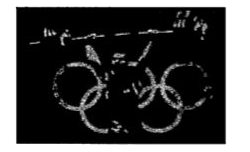A weight lifter lifts a weight off the ground and holds is up, then
work is done in lifting as well as holding the weight.
no work is done in both lifting and holding the weight.
work is done in lifting the weight but no work is required to done in holding it up.
no work is done in lifting the weight but work is required to be done in holding it up.
The correct Answer is:C
To solve the question about the work done by a weight lifter when lifting and holding a weight, we can break it down into clear steps:
1. Understanding Work Done:
Work is defined as the product of force and the displacement in the direction of that force. Mathematically, it is given by:
W=F⋅d⋅cos(θ)
where W is work, F is the force applied, d is the displacement, and θ is the angle between the force and the displacement.
2. Lifting the Weight:
When the weight lifter lifts the weight from the ground to a height H, they are applying an upward force equal to the weight of the object (which is the gravitational force acting downward).
- The displacement d is equal to H (the height lifted).
- The angle θ is 0 degrees since the force and displacement are in the same direction (upward).
- Therefore, the work done in lifting the weight is:
Wlifting=F⋅H⋅cos(0)=F⋅H
where F=mg (mass times gravitational acceleration).
3. Holding the Weight:
Once the weight is lifted to height H, if the weight lifter holds it in that position, the height does not change.
- Since there is no displacement (the weight is not moving), the work done while holding the weight is:
Wholding=F⋅0⋅cos(0)=0
Thus, no work is done in holding the weight because the displacement is zero.
4. Conclusion:
From the analysis, we conclude that:
- Work is done while lifting the weight (against gravity).
- No work is done while holding the weight (since there is no displacement).
Therefore, the correct answer is that work is done in lifting the weight but no work is done in holding it up.
Final Answer:
The correct option is C: Work is done in lifting the weight but no work is required to be done in holding it up.
Work is defined as the product of force and the displacement in the direction of that force. Mathematically, it is given by:
W=F⋅d⋅cos(θ)
where W is work, F is the force applied, d is the displacement, and θ is the angle between the force and the displacement.
When the weight lifter lifts the weight from the ground to a height H, they are applying an upward force equal to the weight of the object (which is the gravitational force acting downward).
- The displacement d is equal to H (the height lifted).
- The angle θ is 0 degrees since the force and displacement are in the same direction (upward).
- Therefore, the work done in lifting the weight is:
Wlifting=F⋅H⋅cos(0)=F⋅H
where F=mg (mass times gravitational acceleration).
Once the weight is lifted to height H, if the weight lifter holds it in that position, the height does not change.
- Since there is no displacement (the weight is not moving), the work done while holding the weight is:
Wholding=F⋅0⋅cos(0)=0
Thus, no work is done in holding the weight because the displacement is zero.
From the analysis, we conclude that:
- Work is done while lifting the weight (against gravity).
- No work is done while holding the weight (since there is no displacement).
Therefore, the correct answer is that work is done in lifting the weight but no work is done in holding it up.
The correct option is C: Work is done in lifting the weight but no work is required to be done in holding it up.
Topper's Solved these Questions
- BOOK - NCERT FINGERTPS ENGLISHCHAPTER - WORK , ENERGY AND POWEREXERCISE - NCERT18videos
WORK , ENERGY AND POWER
- BOOK - NCERT FINGERTPS ENGLISHCHAPTER - WORK , ENERGY AND POWEREXERCISE - ASSERTION & REASON15videos
WORK , ENERGY AND POWER
- BOOK - NCERT FINGERTPS ENGLISHCHAPTER - WAVESEXERCISE - Assertion And Reason15videos
WAVES
Similar Questions
Photosynthesis is a bio process by which plants make energy rich molecules from low energy molecules with the help of energy from sunlight . The photosynthesis of glucose can be represented as:
6CO2(g)+6H2Og+hv→C5H12O6(s)+6O2(g)..........(i)
The energy of one mole of a photon of wave lenght is known as one Einstein.
A weight lifter lifts a weight of 160Kg through of 2.4 m . Assuming all the energy required for this task is obtained by the combustion of glucose , calculate the change in the current produced by a sample of blood of the weight lifter . Same volume of blood (5mL) is tested both before and after lifting the weight and the total volume of blood in his body is 5L. (1 g of glucose releases 15.58 KJ of energy )View SolutionWhat is weight?
View Solution
Knowledge Check
- Question 1 - Select One
A weight lifter lifts a load of 250N while a coolie lifts same load on his head. If the height of weight lifter and coolie is same, compare the work done?

 AWork done is sameBwork done by coolie is moreCwork done by weight lifter is moreDnone of the above
AWork done is sameBwork done by coolie is moreCwork done by weight lifter is moreDnone of the above
Two bags of potatoes are such that the weight of one bag is 5.5 times the weight of the other. If the total weight of the two bags is 156 kg, find the weight of each bag.
View SolutionA weight lifter lifted a load of 200 kgf to a height of 2.5 m in 5 s. Calculate :(i) the work done,and (ii)The power developed by him .Take g =10 N kg−1
View SolutionWeight of an object
View SolutionA 40 kg boy climbs a rope that passes over an ideal pulley. The other end of the rope is attached to a 60 kg weight placed on the ground. What is the maximum upward acceleration the boy can have without lifting the weight ? If he climbs the rope with upward acceleration 2 g, with what acceleration the weight will rise up ?
View SolutionA lift is accelerated upward Will the apparent weight of a person inside the lift increase , decrease or remain the same relative to its real weight ? If the lift is going with unifrom speed then ?
View SolutionA man of 60kg mass is in a lift. Find the apparent weight of the man when the lift is moving up with uniform speed(g=10ms−2)
View SolutionA lift, initially at rest on the ground, starts ascending with constant acceleration 8m/s2 After 0.5 seconds, a bolt falls off the floor of the lift. The velocity of the lift at the instant the bolt hits the ground is m/s .[Take g=10m/s2]
View Solution

